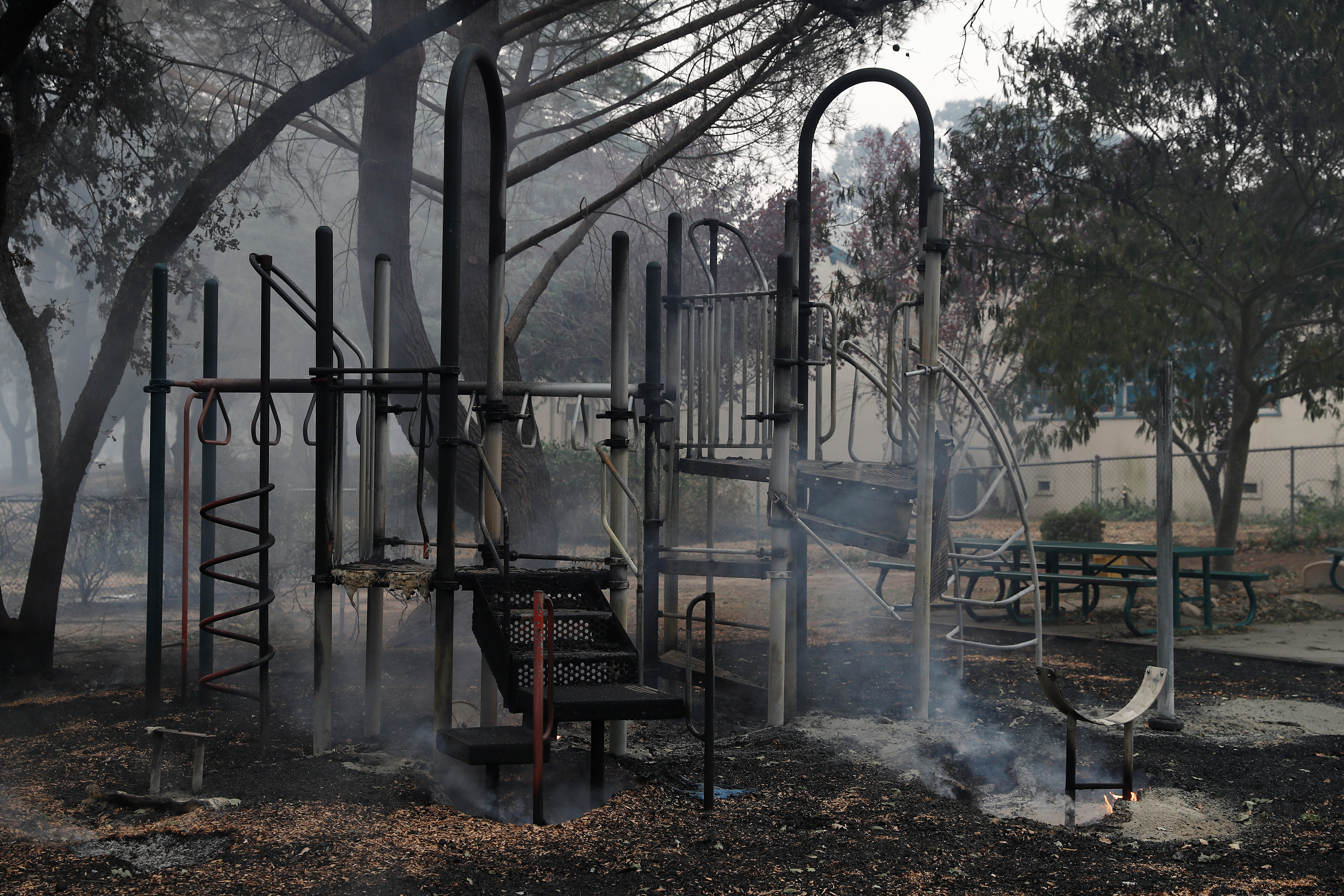
By Noel Randewich
SONOMA, Calif. (Reuters) – Firefighters face another round of dry, windy conditions on Friday as they battle wildfires that have killed at least 31 people in Northern California and left hundreds missing in the heart of wine country.
The most lethal wildfire event in California’s history has killed people while they sleep in their beds and prompted authorities to evacuate thousands of residents, warning anyone deciding to wait it out: “You are on your own.”
The toll from the more than 20 fires raging across eight counties could climb, with more than 400 people in Sonoma County alone still listed as missing.
Winds of up to 60 mph (100 kph) and humidity of just 10 percent will create “critical fire weather conditions” and “contribute to extreme fire behavior” on Friday afternoon and into Saturday, the National Weather Service said.
A force of 8,000 firefighters is working to reinforce and extend buffer lines across the region where the flames have scorched more than 190,000 acres (77,000 hectares), an area nearly the size of New York City.
With 3,500 homes and businesses incinerated, the so-called North Bay fires have reduced whole neighborhoods in the city of Santa Rosa to smoldering ruins dotted with charred trees and burned-out cars.

A structure destroyed by wildfire smolders outside Calistoga, California, U.S. October 12, 2017. REUTERS/Jim Urquhart
The cause of the disaster is under investigation, but officials said power lines toppled by gale-force winds on Sunday night may have sparked it.
The Napa Valley town of Calistoga faces one of the biggest threats and its 5,000-plus residents were ordered from their homes as winds picked up and fire crept closer.
Calistoga Mayor Chris Canning said anyone refusing to heed the mandatory evacuation would be left to fend for themselves if fire approached, warning on Thursday: “You are on your own.”
Sonoma County accounted for 17 of the North Bay fatalities, all from the Tubbs fire, which now ranks as California’s deadliest single wildfire since 2003.
Some people killed were asleep when flames engulfed their homes, fire officials said. Others had only minutes to escape as winds fanned fast-moving blazes.
Mark Ghilarducci, state director of emergency services, said the loss of cell towers likely contributed to difficulties in warning residents.
As many as 900 missing-person reports have been filed in Sonoma County and 437 have since turned up safe. It remains unclear how many of the 463 still unaccounted for are fire victims rather than evacuees who failed to alert authorities, Ghilarducci said.
The fires struck the heart of the world-renowned wine-producing region, wreaking havoc on its tourist industry and damaging or destroying at least 13 Napa Valley wineries.
California’s newly legalized marijuana industry also was hit hard, with at least 20 pot farms in Sonoma, Mendocino and Napa counties ravaged, said Hezekiah Allen, executive director of the California Growers Association.

A sign left by an evacuated resident, fleeing wildfires in the heart of the California’s wine country, rests against a fire hydrant in the evacuated town of Calistoga, California, U.S., October 12, 2017. REUTERS/Noel Randewich
(Additional reporting by Stephen Lam, Dan Whitcomb, Steve Gorman and Alex Dobuzinskis in Los Angeles, Sharon Bernstein in Sacramento, Calif.; Jonathan Allen in New York, Brendan O’Brien in Milwaukee and Jeffrey Dastin in San Francisco; Editing by Robin Pomeroy)
















